Retaining walls are great for protecting your garden or backyard from unwanted objects from the outside. But how could you join two retaining walls? What should you put on the corners to make them strong? Take your worries away! We did resourceful research to help you answer the questions.
It's significant to join the retaining walls to establish a strong barrier. You can do so by following the steps below:
- Sketch the outline of the retaining wall, and dig at least one-eighth of the wall's height.
- Use a nylon string to mark the outline of the walls.
- Put a block on the corner at 90 degrees angle from the perpendicular wall.
- Thump the corner block with a hammer, then arrange the edge blocks to form the perimeter of the walls. You should use a level to ensure proper alignment.
- Place another block on top of the corner with heavy-duty glue.
- Repeat the steps from arranging the blocks to gluing the corner. Add layers of blocks until you reach the desired height of the wall.
- Steps 7 and 8 are optional, but you can do them to enhance the wall's stability. Simply prepare a concrete mixture by mixing sand, gravel, and water.
- Use a trowel to spread the mixture on both sides of the wall. Let the wall dry, and observe its stability for a few days before you put anything within the area.
This time, we'll guide you in joining two retaining walls and why doing so is important. You'll realize how the retaining wall protects your area. Then, we'll discuss some relevant matters about retaining walls. We should not waste any minute. So, join us in reading!
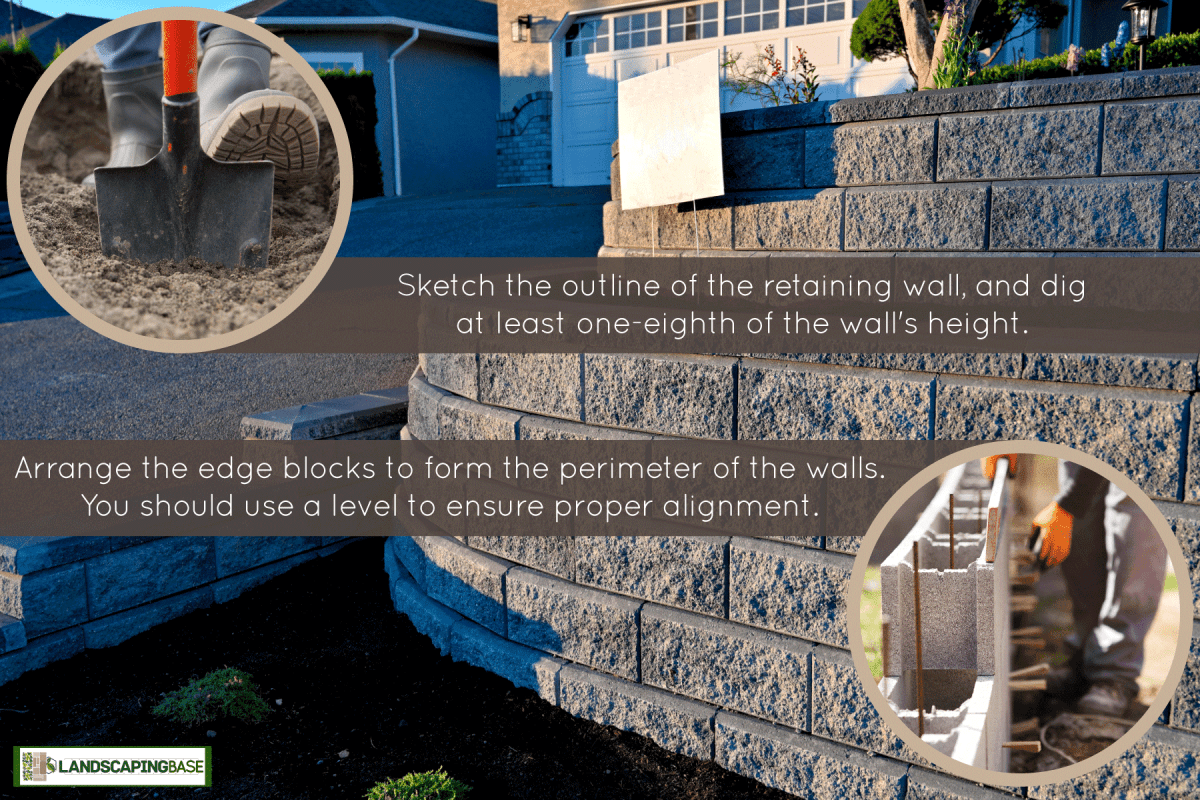
How to Join or Merge Two Retaining Walls
It's important to join or merge the corners of retaining walls for safety and efficiency. Compared to the wall's surface, the corners are quite weaker. It's because the corners carry the pressure and load of the whole structure.
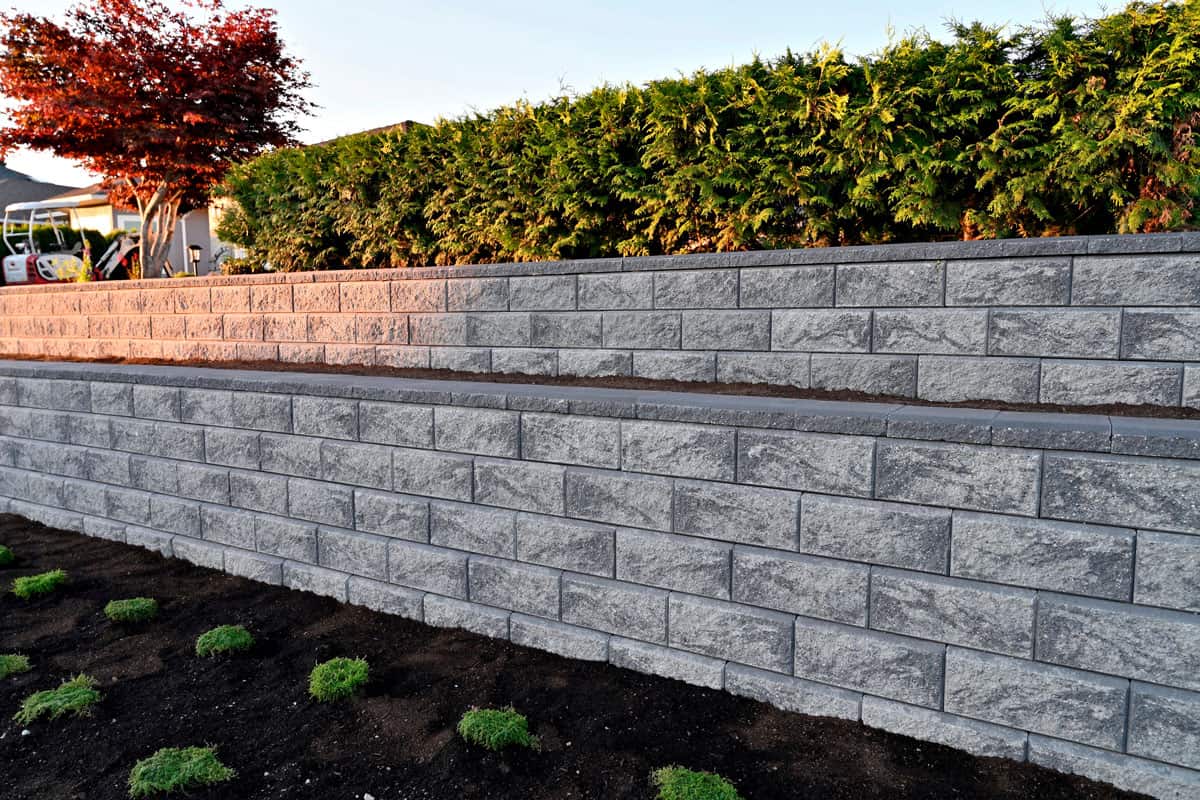
You may notice the corners tearing earlier than any other parts. However, you can resolve this issue by building strong corners and enhancing the wall's structure.
Watch a short clip here regarding the steps on joining the retaining walls:
How Retaining Walls Work?
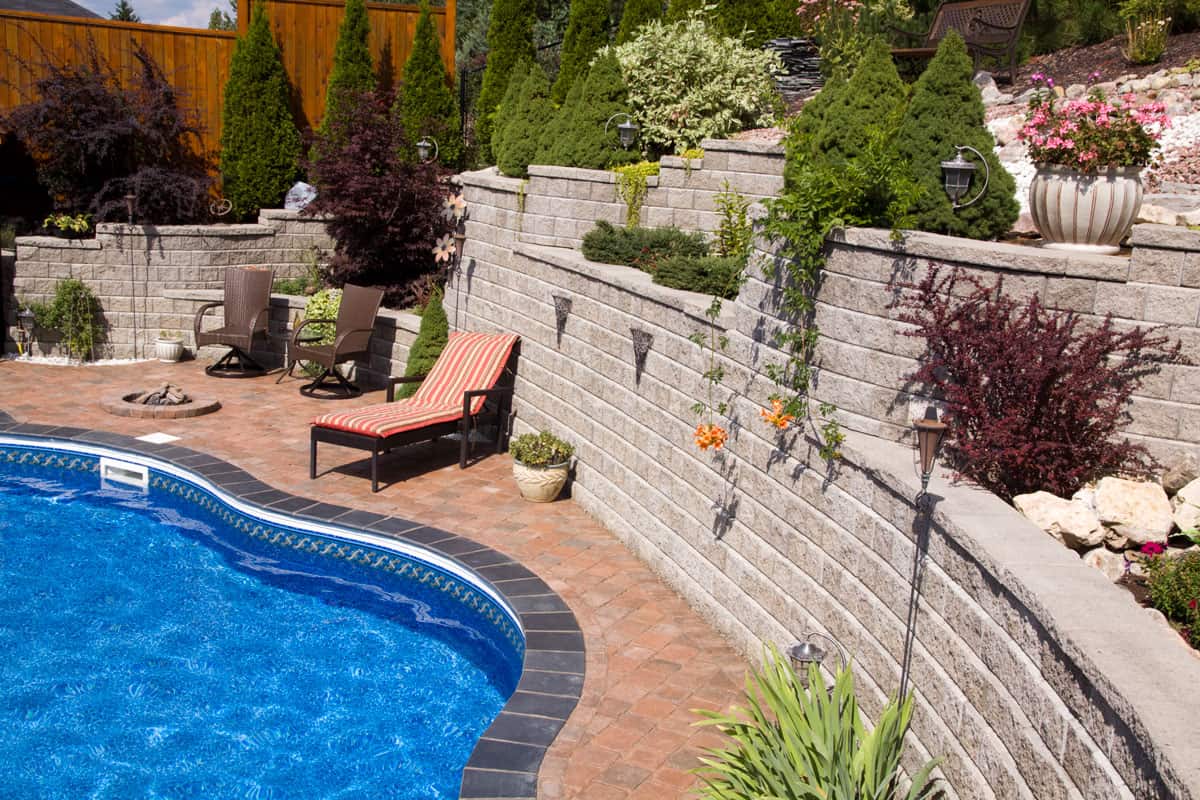
Retaining walls serve as a support system to prevent the soil, sand, or any objects from moving out of the area. However, the purpose may vary on what you are protecting behind these walls. You may refer to some of these purposes below.
Isolation and Decoration
Some homeowners build retaining walls to match the theme of their house. For instance, they want to isolate a plant or flower to protect them from external forces. With retaining walls, you can control the growth of the plants. As a result, the plants will be an attractive decoration in your backyard or garden. However, you should assess further if this technique applies to your area.
Drainage Enhancement
The rainwater may collect in one spot, causing the soil to soften and damage nearby structures. You can build a retaining wall to redirect the rainwater to the main drainage. This will reduce the risk of soil erosion and flood. This technique needs proper evaluation on some factors like the slope of the area and the condition of the ground.
Security
Retaining walls can also protect your yard from stray cats and dogs from invading your property. They may act aggressively and destroy the plants in your garden. Additionally, you can restrict strangers from picking up your flowers when they walk past your area.
Poolside Protection
Some homeowners build a retaining wall around the pool area. This is to prevent accidents like slipping, especially if you have children. Retaining walls can also prevent soil from mixing with the pool water, resulting in easier cleaning. You don't want wet mud flowing down the pool area, which may cause damage to the motors and block the drainpipes.
What Is a Geogrid?
Geogrid is a hollow material used to prevent the soil from moving. It is placed on top of the soil and beneath the bricks to hold the wall from collapsing. It's ideal to use geogrid on sloped surfaces so that the soil will not slide downwards.
To install a geogrid, simply follow these steps:
- Lay down the geogrid on top of the first layer of the blocks. Make sure the arrow is facing inward.
- Clip the geogrid against the blocks, then place another block on top of it.
- After installation, continue finishing the retaining wall.
Watch a short video here for installation steps:
What Material Should You Use for Retaining Walls?
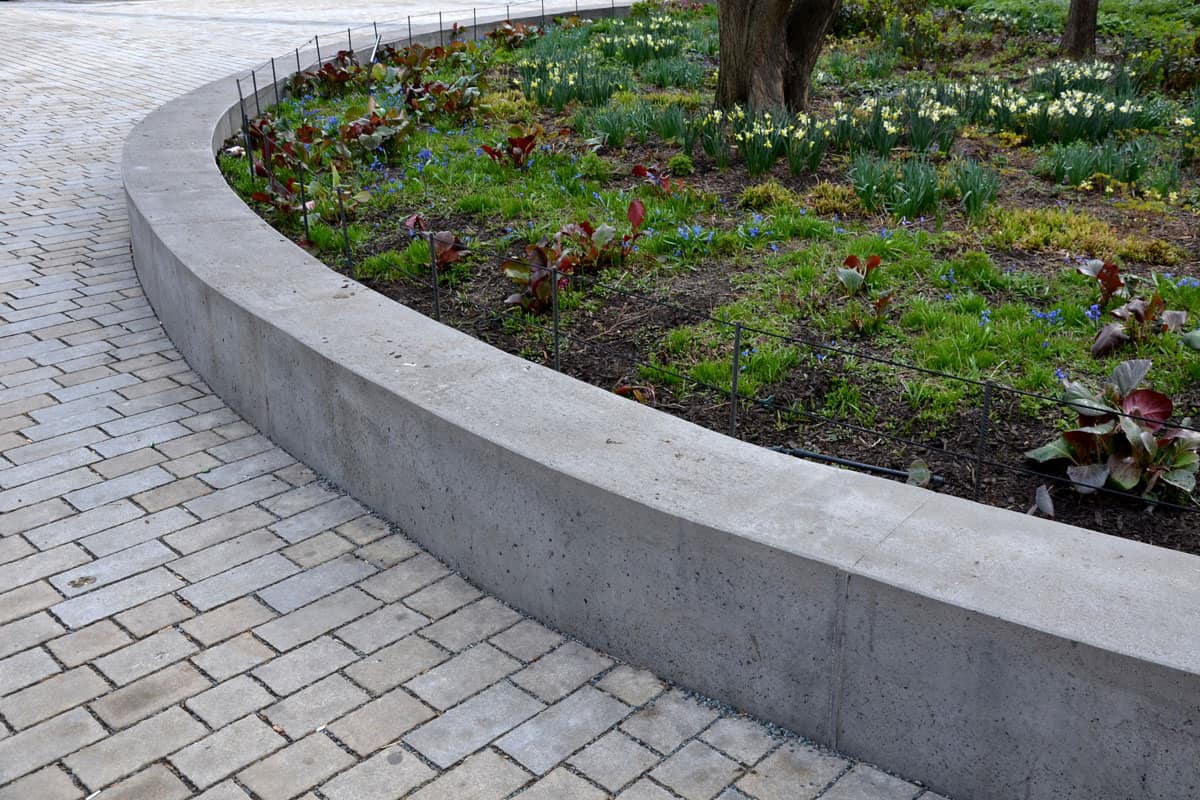
There are a lot of materials you can use in making a retaining wall. These materials may differ in quality and compatibility with the surface. See below the materials you can use.
Concrete Block
A concrete block is similar to bricks, except that it's a combination of concrete, mortar, sand, and water. Concrete block has two types, namely hollow and solid. Their only difference is that a hollow concrete block has a space for adding a support material like steel or stone fillers. You can use any of these types to build a retaining wall.
Poured Concrete
Unlike a concrete block, poured concrete needs plywoods to hold the shape of a retaining wall. The concrete mixture is poured between the plywoods until the concrete mixture goes hard. This option is quite cheaper than concrete blocks. However, you should ensure it is proportionate.
Bricks
Bricks are durable materials made of molded and burnt clay. Using bricks can make the area appear brighter due to its brownish color. However, it's recommended to use bricks with other materials such as mortar or cement mixture to maximize stability.
Natural Stone
It can be an expensive choice, but natural stone is durable throughout years of use. Unlike other materials, natural stones are highly resistant to moisture and heat. However, natural stone can be hard to install due to its texture.
How Thick and How High Should Retaining Walls Be?
You can consider a thickness of 12 inches and a height of 3-4 feet. This measurement is sufficient for the retaining wall to be effective. However, this is just a guide, and you should match the size with the wall's purpose based on your needs. A too high retaining wall is costly, while a too low can be ineffective.
Can You Make a Curved Retaining Wall?
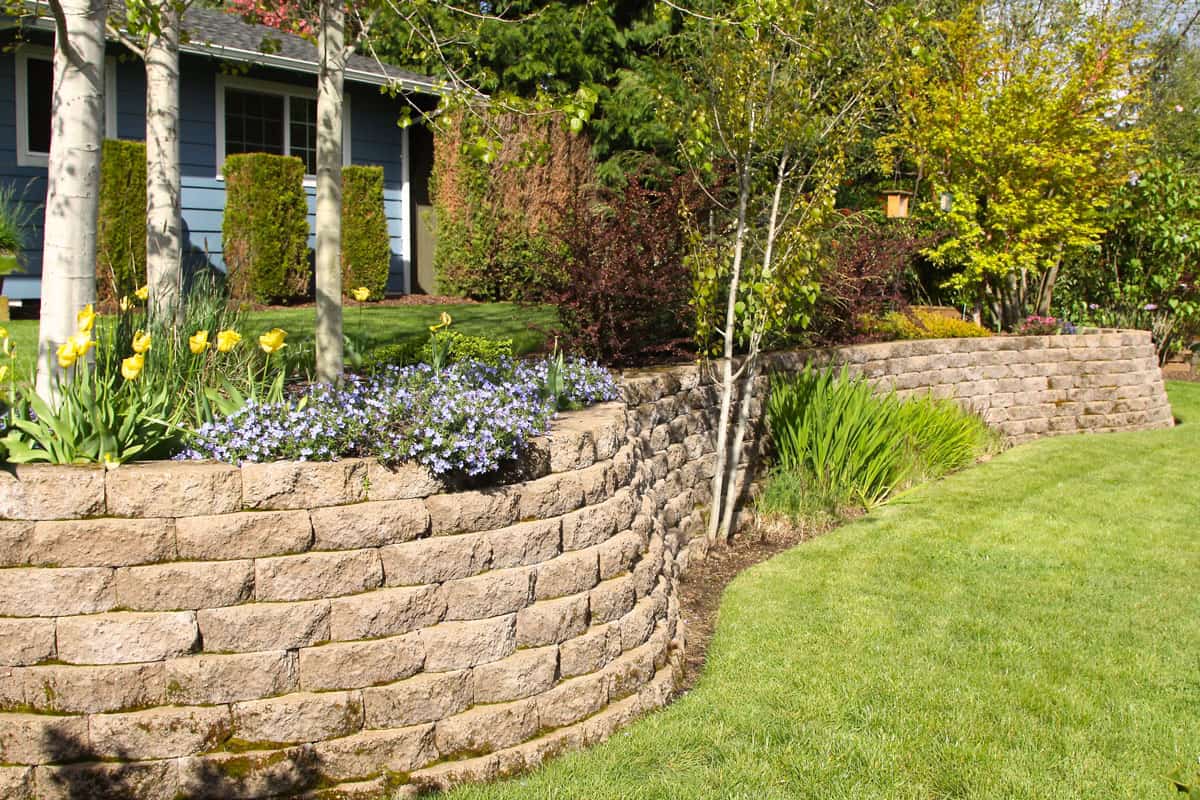
Yes, a curved wall tends to be stronger than a straight one. It's because the peak of the curve helps resist lateral forces like a sudden collision of an object. Curved walls also require less brick or stone due to the stability the curves provide. Unlike straight walls that might need another layer to sustain stability against abrupt forces. Otherwise, a single layer of a straight wall may stumble easily.
If you want to make a curved retaining wall, consider the following factors:
- Keep the space between the blocks consistent.
- Cut the excess portion or wing of the block when building an external curve.
- Slant the blocks to indicate a starting point for the curve.
- Keep the blocks tight from each other to cover any gaps.
- Use a strong adhesive to stick the blocks together.
Does a Retaining Wall Require Permit?
You'll probably need a permit to build a retaining wall depending on your location. It's best to consult the local authorities on this matter. You may need proper documentation before you build anything in your area. This is to evaluate if the materials are safe to use and for the legality of the construction.
How Much Does Building a Retaining Wall Cost?
On average, you'll spend around $19 up to $50 per square foot of a retaining wall. The price range may change depending on the material you use. The labor cost may cost you as high as $200 per hour. However, you may cut costs by learning how to install the walls independently. It's also good to estimate the material cost based on how wide the area is.
Conclusion

We're glad you reached this point in the article. We learned how to join or merge two retaining walls by installing the corners correctly. We then discussed the purposes of a retaining wall, such as poolside protection and drainage enhancement.
You also learned what material to use, like a natural stone or poured concrete. We then provided the accurate dimension of the retaining wall. This will help you in estimating how much of an area is required.
In the end, we shared how much you can spend on building a retaining wall, as well as the things considered in making a curved wall. Remember to ask for a permit from the local authorities if they require you to.
We don't stop learning! Explore more articles like this by visiting us here:


![A man using a portable vacuum to collect dead leaves, Will A Leaf Vacuum Pick Up Mulch? [Can It Remove Leaves From Mulch?]](https://landscapingbase.com/wp-content/uploads/2022/09/Man-using-a-portable-vacuum-to-collect-dead-leaves-600x400.jpg)

